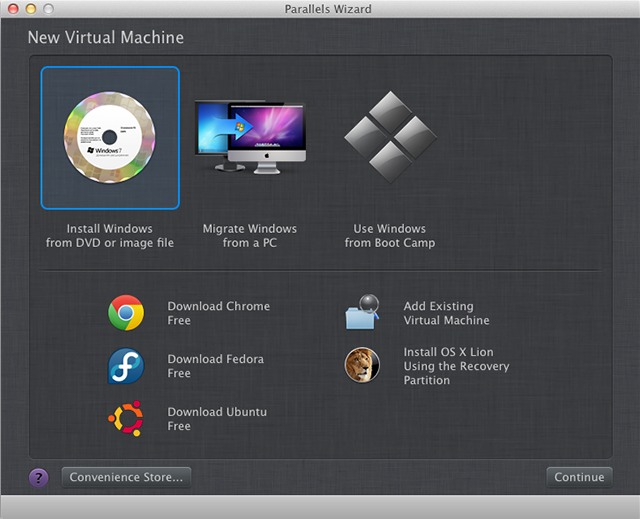

- #Parallels desktop for mac os 10.7 mac os x#
- #Parallels desktop for mac os 10.7 serial#
- #Parallels desktop for mac os 10.7 drivers#
- #Parallels desktop for mac os 10.7 upgrade#
- #Parallels desktop for mac os 10.7 full#
This version brought the ability for users with a Windows XP installation to upgrade to Windows Vista from within the VM environment.
#Parallels desktop for mac os 10.7 mac os x#
In addition, a shared clipboard and drag-drop support between Mac OS X and the guest OS was implemented.
#Parallels desktop for mac os 10.7 full#
Full featured CD/DVD drives arrived in this version, which allowed the user to burn disks directly in the virtual environment, and play any copy-protected CD or DVD as one would in Mac OS X. The amount of video RAM allocated to the guest OS was made adjustable, up to 32MB. Version 2.5 brought support for USB 2.0 devices, which expanded the number of USB devices supported at native speed, including support for built-in iSight USB webcams. The first official release of version 2.5 was on February 27, 2007, as build 3186.
#Parallels desktop for mac os 10.7 serial#

A 1.44 MB floppy drive, which can be mapped to a physical drive or to an image file,.

#Parallels desktop for mac os 10.7 drivers#
Because all guest virtual machines use the same hardware drivers irrespective of the actual hardware on the host computer, virtual machine instances are highly portable between computers. Each virtual machine thus operates identically to a standalone computer, with virtually all the resources of a physical computer. Parallels Desktop for Mac is a hardware emulation virtualization software, using hypervisor technology that works by mapping the host computer's hardware resources directly to the virtual machine's resources. On January 10, 2007, Parallels Desktop 3.0 for Mac was awarded “Best in Show” at MacWorld 2007. Parallels agreed: “ Since we've got a great Mac product, we should make it look and sound like a Mac product.”, it was therefore renamed ‘Parallels Desktop for Mac’. This name was not well received within the Mac community, where some felt that the name, particularly the term “workstation,” evoked the aesthetics of a Windows product. Its name initially was ' Parallels Workstation for Mac OS X', which was consistent with the company's corresponding Linux and Windows products. Released on June 15, 2006, it was the first software product to bring mainstream virtualization to Macintosh computers utilizing the Apple–Intel architecture (earlier software products ran PC software in an emulated environment). is a developer of desktop and server virtualization software. 2.4.1.5 macOS Server guest operating system.2.4.1.3 Windows guest operating systems.2.2.2 Use of code from the Wine project.These, and a good number of other interesting features, are waiting for you in what is, according to many, the best virtualization tool on the market. This includes the entire Windows family (from Windows 3.1 to Windows Vista), the main Linux distributions (SUSE, Red Hat, Debian, Fedora.) and other operating systems such as FreeBDS, Solaris, OS/2, etc. The full list of operating systems that are compatible with Parallels Desktop for Mac can be found by clicking on here. Parallels Explorer is the file manager that lets you access content on the Windows Volume without having to boot up the operating system. One of the most noteworthy is its compatibility with DirectX and OpenGL, which lets you run most of the games and applications that use 3D graphics, among them: Half Life 2, FarCry, Soldier of Fortune 2, Autodesk 3ds Max, etc.Īnother interesting feature of Parallels Desktop for Mac is being able to open any Mac file on Windows and vice versa thanks to the 'Smart Select' option that also lets you associate a file type to an application regardless of what operating system it belongs to. Parallels goes above and beyond by implementing an ample range of virtualization features that are absent from the competition. Being able to run Windows as if it were native to Mac has made virtualization less important, even more so when free alternatives such as VirtualBox are available.


 0 kommentar(er)
0 kommentar(er)
